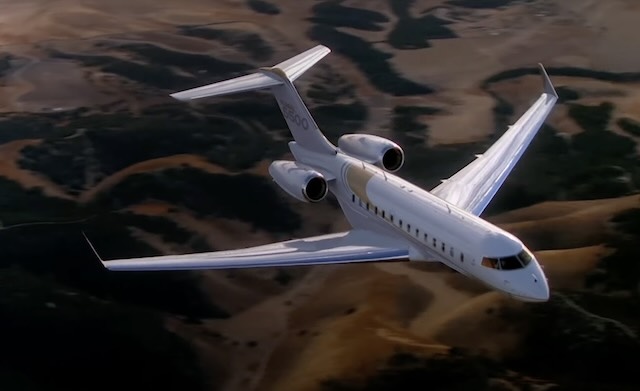BD-700 Global Express
Summary
| Category | Military Transport Aircraft |
| Origin country | 🇨🇦 Canada |
| Manufacturer | Bombardier |
| First flight | 13 October 1996 |
| Year introduced | 1999 |
| Number produced | 816 units |
| Average unit price | $25 million |
Description
After acquiring Canadair in 1986, Bombardier initiated studies for a long-range business jet, aiming to transport eight passengers and four crew members over 12,000 km at Mach 0.85. This led to the establishment of a joint-definition team in Montreal in the early 1990s, including partners such as Mitsubishi Heavy Industries and BMW Rolls-Royce. These partners independently designed aircraft elements and shared program stakes. The selection of suppliers early on influenced the design, with systems chosen before the detailed design phase. The design process employed CATIA CAD software for kinematics, finite-element analysis for structural design, and computational fluid dynamics for aerodynamics, validated by wind tunnel testing. The new aircraft was designed to minimize components while ensuring redundancy, targeting a 99.5% dispatch reliability. Although not a formal requirement, Bombardier incorporated ETOPS design rules, influenced by operators seeking airline-level safety, opting for a conventional mechanical flight control system over fly-by-wire due to development costs and customer apprehension. The Global Express was unveiled in October 1991, and the program was launched in December 1993. The first prototype manufacture began in October 1995, and the first prototype completed its maiden flight on October 13, 1996, from Toronto. The flight test program involved four prototypes, accumulating 2,200 flight hours. Canadian type certification was granted in July 1998, followed by European and US approvals, with the Global Express entering service in July 1999.
The Global Express is a high-speed business/corporate aircraft designed for long-range travel, capable of covering 6,500 nautical miles (12,000 km) at Mach 0.80, with a service ceiling of 51,000 feet (16,000 m) and an endurance of 14 hours. Its semi-monocoque airframe is constructed using lightweight aluminum alloys and composite materials. The design incorporates a low-wing configuration, tricycle landing gear, and fuselage-mounted engines. It shares its fuselage cross-section with the Canadair CL-600 and Bombardier CRJ, but features a new T-tail and a supercritical airfoil wing with a 35° sweep and winglets, which naturally attenuates turbulence. The aircraft is powered by two BMW-Rolls-Royce BR710 turbofans controlled by FADEC, and the flight deck is equipped with a six-screen Honeywell Primus 2000XP EFIS suite. It can accommodate 12 to 16 passengers in three cabin sections, with a cabin pressurization system maintaining a 4,500-foot cabin altitude up to FL 450 and 5,680 ft. at the FL 510 ceiling. The platform can be adapted to carry mission-specific equipment and sensors. For example, the GlobalEye AEW&C, based on the Global 6000, integrates Saab's Erieye ER AESA radar. Similarly, the Hensoldt Pegasus, a Global 6000 variant, is designed for SIGINT missions, implying the integration of electronic intelligence-gathering equipment. The United States Air Force's E-11A, another Global Express derivative, functions as a Battlefield Airborne Communications Node, suggesting it can carry and operate communication and networking equipment.
The Global Express has seen extensive use in both civil and military roles across the globe. Operated by private individuals, companies, executive charter services, and government agencies, it serves primarily as a long-range business jet, transporting passengers. Several air forces also employ the Global Express, often in VIP transport roles, as seen in the Angolan, Botswanan, Malaysian, and Mexican Air Forces. More specialized military variants have emerged, including the GlobalEye multi-role AEW&C platform for the United Arab Emirates Air Force, the Hensoldt Pegasus for the German Federal Ministry of Defence, and the E-11A Battlefield Airborne Communications Node operated by the U.S. Air Force. These military adaptations leverage the Global Express's long-range capabilities and spacious cabin for various mission requirements.
Main Variants:
-
Global 5000: A shorter range variant of the Global Express, with a cabin 5.9 ft shorter than the Global 6000, it offers a range of 4,800 nmi at Mach 0.85.
-
Global Express XRS: An improved version of the original Global Express, the XRS features greater range at high speed, cabin upgrades, and enhanced takeoff performance.
-
Global 6000: This variant rebranded the Global Express XRS, upgrading the avionics to the Bombardier Vision flight deck based on the Rockwell Collins Pro Line Fusion suite.
-
Global 5500/6500: Unveiled in May 2018, these longer-range variants are powered by updated Rolls-Royce BR710 Pearl engines and feature redesigned cabins and optimized wings.
-
GlobalEye: A modified Global 6000 platform equipped with the SAAB Erieye's ER AESA radar, serving as a multi-role AEW&C aircraft for the United Arab Emirates Air Force.
Technical specifications
| Version: Global 6000 | |
|---|---|
| Maximum speed | 950 km/h (590 mph) |
| Wing area | 95 m² (1022.6 sqft) |
| Wingspan | 29 m (95.1 ft) |
| Height | 7.3 m (24.1 ft) |
| Length | 30.3 m (99.5 ft) |
| Service ceiling | 15,545 m (51,001 ft) |
| Empty weight | 22,566 kg (49,749 lbs) |
| Max. takeoff weight | 45,132 kg (99,499 lbs) |
| Takeoff distance | 1,865 m (6,119 ft) |
| Powerplant | 2 x turbofans Rolls-Royce BR710A2-20 delivering 6690 kgf each |
Current operating countries
| Country | Units | ||
|---|---|---|---|

|
United Arab Emirates | 7 | |

|
United States | 6 (+16) | |

|
Turkey | 4 | |

|
India | 2 | |

|
Sweden | 0 (+4) | |

|
Germany | 0 (+3) | |
All operators
